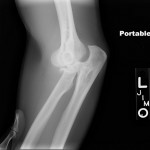 RSS FEED
RSS FEED
This is my journal of living with Migraine and other chronic illness. Trying to live well, to live a purposeful life, with chronic illness, since I don't get the choice of living one without it!
How much Pain?
December 2nd, 2009
My daughter had her wisdom teeth out yesterday. Once the anesthesia wore off she started feeling pretty  serious pain. She took her first Lorcet and called me on the intercom about half an hour later, sounding panicked – she needed more pain meds, right now! We got her some ibuprofen, but tried to explain that the meds take a while to take effect, and to give it a chance. Today she is in bed with a swollen face, pain and nausea, quite miserable. We’re bringing the ice packs, the medications, the mushy food, and trying to comfort her the best we can.
serious pain. She took her first Lorcet and called me on the intercom about half an hour later, sounding panicked – she needed more pain meds, right now! We got her some ibuprofen, but tried to explain that the meds take a while to take effect, and to give it a chance. Today she is in bed with a swollen face, pain and nausea, quite miserable. We’re bringing the ice packs, the medications, the mushy food, and trying to comfort her the best we can.
I’ve been thinking about the nature of pain. At nineteen, my daughter has never had surgery before, never had a broken bone or other serious injury, and the only serious illness she has had was the chicken pox at age four. Her pain today is real and I can’t be the judge of how much pain she has. Her pain may be worse because unfamiliar. When I was her age, I had had: Migraines for at least six years, a broken arm, stitches on my face, major abdominal surgery, the mumps, the chicken pox, scarlet fever, the measles… Pain and I were old acquaintances (I won’t say friends). I have written before about how you never get used to pain. Pain is, in some ways, continuously and horribly new every time, every moment. But at the same time, pain can become familiar, and for that reason, perhaps less frightening.
 The most severe pain I can remember was when I broke and dislocated an elbow. I went into shock, I believe from the pain. Both my labors were quite painful, as I had an unproductive pattern of contractions, which came two or three in a row without pause, and each set didn’t do as much work as one normal contraction. Childbirth pains are different, I think, because any pain you experience is for something, something big and very important, and you know there is an end in sight. At twenty-nine I fell and herniated a disk and lived for years with nagging, stinging pain in my low back and right leg. I have also had Migraines where the pain was so intense I felt moment by moment as if I could not stand one moment more, where all I could do was rock myself and sob, to quote a Migraine buddy of mine. I also had my wisdom teeth out at twenty-two and I don’t remember how that pain compared, but I do remember two miserable and very drugged up days.
The most severe pain I can remember was when I broke and dislocated an elbow. I went into shock, I believe from the pain. Both my labors were quite painful, as I had an unproductive pattern of contractions, which came two or three in a row without pause, and each set didn’t do as much work as one normal contraction. Childbirth pains are different, I think, because any pain you experience is for something, something big and very important, and you know there is an end in sight. At twenty-nine I fell and herniated a disk and lived for years with nagging, stinging pain in my low back and right leg. I have also had Migraines where the pain was so intense I felt moment by moment as if I could not stand one moment more, where all I could do was rock myself and sob, to quote a Migraine buddy of mine. I also had my wisdom teeth out at twenty-two and I don’t remember how that pain compared, but I do remember two miserable and very drugged up days.
I have learned, though, that something changes when pain is familiar, when it is not mysterious. Yes, frequent severe pain is debilitating, exhausting, dis-enheartening beyond belief. But at the same time, with familiarity it can lose some of its power over us.
What do I mean by that? This is difficult to talk about. Pain is real, but at the same time our experience of it is subjective. It’s not “all in our heads” in the sense of being imagined. It is not produced by neurosis or by being weak or hysterical. But at the same time, we can change and effect our experience of pain. When my Migraines became very frequent, I learned a practice of deliberate relaxation, based in yoga, biofeedback and guided imagery. A part of the practice is to look at pain head on – to be very aware of the experience of pain. Not to fight it or try to pull away from it, but to meet it, recognize it, describe it and observe it. In that process we get some detachment from it. Sometimes we can reduce it significantly, or make it disappear. Even if that doesn’t happen, we can make it much easier to bear.
I teach these relaxation techniques to Migraineurs and others with chronic illnesses because I believe we can truly make a difference for ourselves when we learn to focus inward. I believe we should fight for better treatment, strive and work to understand and manage our own systems, but when faced with pain we must practice a kind of acceptance. I’m not talking about being a doormat or giving up. I am talking about looking the pain in the eye – saying yes, there it is, it feels like this, it is this much better or worse than any other pain, it is located here, it behaves like this. Observing it, allowing it to be and allowing it to fade.
I’m not saying this is easy. Don’t ever let anyone tell you you should “just” learn to live with it. There is no “just” about it – it’s hard and takes continual work. I use relaxation zealously in the tough times and then I slack off, and have to pick it back up and get back in practice when the next challenge comes along. Overall I have developed an awareness of my system and its ups and downs. I have less pain in my life, and the pain has less effect on me, than before I began these techniques.
There may be some kind of threshold level beyond which the rules change, or become distorted. I haven’t experienced really frequent or chronic severe pain. Six years ago my Migraine pattern suddenly increased, from a monthly menstrual Migraine plus one or two big ones a year, to three or four major Migraines a week. That was the closest I have come to experiencing truly chronic pain. And three or four times a week I felt something like the panic I heard in my daughter’s voice yesterday. Nowadays pain doesn’t panic me. I may get cranky and resentful, but sooner rather than later i say to myself, Okay here it is again. Be with what’s so, and do what I can to help it ease or pass.
I am learning a new kind of pain as I adjust to fibromyalgia. My body has become a pain amplifier, and a small pain can grow outward with ripples over a day or more until I hurt everywhere. I am having a flare-up today. I ache from head to toe. I am grateful that despite the allover aches, I don’t feel the constant severe pain I hear of from some with fibro. I am practicing what Migraines have taught me, to pace myself, to push only gently, to be with the pain, not to fight it, to know that this too shall pass.
I’m hoping for a better tomorrow, for me, for you, for my daughter. In the meantime, I will be with what’s so. My arms ache and I’m going to rest now.
– Megan
Wisdom tooth image courtesy of Steve Montgomery; broken elbow image courtesy of H Dragon.
Tags: fibromyalgia, Migraines, pain, pain levels, pain management, relaxation techniques, wisdom tooth extraction
Posted in Managing, Musings | Comments (3)
Another Day, another Migraine
November 8th, 2009
Waking with head pain. Hoping it will go away. Have a work obligation – know if I take my triptan I won’t be able to drive. Weighing how much trouble it will cause to miss the meeting. Cup of coffee damping down head pain. Driving off to meeting. Sitting through it with hand pressed to right eye, shifting to shield both eyes from bright overhead lights. Meeting ending. Weighing whether I should drive. Getting home with help. Pain increasing all the way. Nausea beginning. In the door, family brings me food. Take sumatriptan injection. Incredible pain from injection. Unbelievable that I can do that to myself. Counting twenty seconds while holding burning needle in arm. Arm hideously sore to the touch. Initial increase in head pain from injection. Lying down. Breathing. Breathing. 3 in 5 out. Directing breath to head pain. Funny sensation in chest & stomach from sumtriptan. It passes. Pain eases. Lying very still for fear of reawakening it. Exhausted. Day on the bed. Second one in a week. Another day, another Migraine.
able to drive. Weighing how much trouble it will cause to miss the meeting. Cup of coffee damping down head pain. Driving off to meeting. Sitting through it with hand pressed to right eye, shifting to shield both eyes from bright overhead lights. Meeting ending. Weighing whether I should drive. Getting home with help. Pain increasing all the way. Nausea beginning. In the door, family brings me food. Take sumatriptan injection. Incredible pain from injection. Unbelievable that I can do that to myself. Counting twenty seconds while holding burning needle in arm. Arm hideously sore to the touch. Initial increase in head pain from injection. Lying down. Breathing. Breathing. 3 in 5 out. Directing breath to head pain. Funny sensation in chest & stomach from sumtriptan. It passes. Pain eases. Lying very still for fear of reawakening it. Exhausted. Day on the bed. Second one in a week. Another day, another Migraine.
Tags: migraine
Posted in Rant | Comments (3)
How Can we Work with Migraines?
November 5th, 2009
 disabling disorder. Migraine disease has a very real impact on our careers and our earning capacity. Many of us find we cannot keep up with the schedule, or the stress, or the intellectual demands, of our former jobs. Maybe we can’t work full-time hours, but we can still do productive work. Some of us are partly disabled, or mostly disabled, but don’t qualify for disability income.
disabling disorder. Migraine disease has a very real impact on our careers and our earning capacity. Many of us find we cannot keep up with the schedule, or the stress, or the intellectual demands, of our former jobs. Maybe we can’t work full-time hours, but we can still do productive work. Some of us are partly disabled, or mostly disabled, but don’t qualify for disability income.
I’ve been working from home since 1991, although I have had several part-time jobs at an actual job site since that time. My list is long: I have worked as a per diem attorney; I mediate for divorcing couples; I have done free-lance writing; I have taught school part time; I have worked retail part time; I have run a full-time business as a business coach, and a part-time business as a Migraine management coach. I’ve done a number of these things simultaneously. It hasn’t made me rich, and it has its ups and downs and delays.
- getting accommodations for your Migraines at work under the Americans with Disabilities Act (ADA).
- getting unpaid leave on an as needed basis under the Family Medical Leave Act (FMLA).
- getting Permanent Disability for Migraine disease.
One of the difficulties many of us face, though, is that we may be too impaired to work full time, but not impaired enough to apply for permanent disability. If only there was such a thing as partial disability, that made up the difference between what we’re able to earn now and what we earned before! The remedies available in the law won’t necessarily help you choose how to live with the real-life situations you find yourself in.
It is possible to earn a living working from home, or on a free-lance basis. I can only touch on this subject today, but I hope to add a lot of resources to the site soon to help you find and maintain this kind of work. Is your work something that you could do part-time, or as a substitute? Many professionals may be able to do substitute, per diem, or fill-in work for their professional colleagues. A steady load of this work can take a little while to build up, but is usually available if you’re willing to look for it. You might also consider substitute teaching – substitute teachers in large school districts may get called to teach almost every day.
Work at home jobs can be anything from regular jobs where you work for an employer, clock in on your computer and work regular hours, to a huge variety of free-lance and business opportunities. There are books, blogs and web sites devoted to work at home opportunities. There are new professions like virtual assistants which serve those who work at home, where people with secretarial or administrative skills make them available on a contract basis. Like any other job search, finding work at home will involve focusing in on something you can do and building skills and contacts in that area.
 The hardest part of working at home is the lack of structure, especially if you are working for yourself. I recommend setting working hours and sticking to them – go to work and don’t try to get your housework done at the same time. We Migraineurs have it even harder, we have the interruptions of Migraines on top of the lack of structure of working at home. The best piece of advice I can give you is, get as much support as you can. If you’re going to work on your own, get a coach or a support group to help you stay on track. There is a life between full time work and total disability, and there are lots of us out here living it who’d be happy to support you. The Migraine Support & Coaching Group is available to help you get started and keep going in your work at home venture.
The hardest part of working at home is the lack of structure, especially if you are working for yourself. I recommend setting working hours and sticking to them – go to work and don’t try to get your housework done at the same time. We Migraineurs have it even harder, we have the interruptions of Migraines on top of the lack of structure of working at home. The best piece of advice I can give you is, get as much support as you can. If you’re going to work on your own, get a coach or a support group to help you stay on track. There is a life between full time work and total disability, and there are lots of us out here living it who’d be happy to support you. The Migraine Support & Coaching Group is available to help you get started and keep going in your work at home venture.
– Megan
Tags: Migraine disability, work at home, working
Posted in Managing, Tips & Techniques | Comments (0)
Medication Basics
November 3rd, 2009
I’ve been getting a lot of medication questions from readers lately. Of course what we are all looking for is  something that will help us feel better, without side effects that mess up our lives! I am not a medication expert. I’m not a doctor, and while I am interested in science I haven’t taken a science class since college, many years ago! What I do is help people with Migraine disease manage their lives, inside of the resources that are available, part cheerleader (you Can do it!), part manager (here’s how – here’s when – let’s plan it), part personal trainer (yes, just stretch a little further, let’s keep it going), part teacher (here’s some knowledge and information that will help).
something that will help us feel better, without side effects that mess up our lives! I am not a medication expert. I’m not a doctor, and while I am interested in science I haven’t taken a science class since college, many years ago! What I do is help people with Migraine disease manage their lives, inside of the resources that are available, part cheerleader (you Can do it!), part manager (here’s how – here’s when – let’s plan it), part personal trainer (yes, just stretch a little further, let’s keep it going), part teacher (here’s some knowledge and information that will help).
In my view, medication is a partial solution. We have a brain chemistry that causes us to have Migraine attacks – that chemistry can be partially addressed with medication. We can also have a large impact on our nervous systems through regulating our lives – getting regular sleep and relaxation, eating properly and regularly. Learning our triggers and getting attuned to our energy levels, we can reduce our Migraines. With a combination of medication and this kind of self-knowledge, we can reduce Migraines significantly.
That said, here is some basic information about types medication for Migraine.
- Preventive Medications: These are medications that lower the responsiveness or triggerability of our nervous systems, reducing the number of Migraines we get. There are over a hundred different medications that are used as preventives. None of them were actually developed for Migraine prevention, but started as off-label uses of drugs for other conditions. They come from many families of drugs, and there are nutritional supplements used as well. The most commonly used ones fall into three categories:
- anticonvulsants, the same kind of medications that are prescribed to treat epilepsy, such as Topamax or Depakote;
- antidepressants, several different classes of these drugs can help prevent Migraines, generally prescribed at a much lower dose than used to treat depression; and
- antihypertensives, again, several different classes of these drugs are effective for some people.
No preventive medicine will prevent every single Migraine, and different ones work, alone or in combination, for different people. A very complete list of these medications is available at My Migraine Connection: Migraine Preventive Medications – Too Many Options To Give Up!
- Abortive Medications: These are medications that stop a Migraine in progress. They act directly on the nerves which are firing, causing the Migraine process. They are not pain-killers, but will stop the process that is causing the pain, and when effective they will usually work within a few hours. They include the triptans (the only readily available class of drugs that were developed specifically for Migraine treatment) as well as ergotamines and compound medications like Midrin and Treximet. The compound medications contain a pain-killer as well as an abortive agent, so be cautious when using with other pain-killers so as not to take too much at one time.
- Rescue Medications: Rescue medications are usually pain-killers, anti-nausea medications, or relaxants. They do not stop a Migraine themselves but help to mask the pain and let us relax while the Migraine runs its course. They are to be used when you can’t take abortive medications or when abortives have failed. Rescue medications which are in the opioid and barbiturate families should generally not be used more than 3 times per month, as they carry a risk of causing transformed Migraine – a condition with daily head pain and frequent Migraine attacks.
Over the counter pain medications, even if they have “migraine” in the name, do nothing but cover up the pain for a short time, and are not truly Migraine medications. They may be the only alternative for you at a particular time, if you don’t have prescription medications or you can’t take them. But several cautions:
- Some over the counter medications carry serious risks – acetaminophen (Tylenol) for instance, can cause severe liver damage and even death if taken in excess of the dosing amounts. If you take it and then vomit, you can’t know whether the medication was absorbed before you vomited – it is a severe risk to take more! It is also present in combination in drugs like Midrin (which contains a drug to widen narrowed blood vessels in the brain and a relaxant, as well as acetaminophen), Percocet (which contains a narcotic pain-reliever as well as acetaminophen) and Fioricet (which contains caffeine and a sedative as well as acetaminophen). When taking these combination drugs you must be careful not to take additional acetaminophen.
- Any pain medication taken more than 2-3 days in a week can cause rebound headaches – or Medication Overuse Headache – which can feel as severe as a Migraine. This is also true of taking triptans more than 2-3 days per week.
- It is rare but possible to develop a life-threatening allergy to NSAIDS (aspirin family – aspirin, ibuprofen, naproxen). This happened to me. If you have any signs of an allergic reaction to any medication, stop using it and seek medical help.
If you have 3 or more Migraines per month, Migraine specialists will consider you a candidate for preventive medication. Most Migraine specialists will prescribe a preventive, abortive and rescue medication for you, so that you can prevent as many Migraines as possible and treat the ones that happen anyway. If your doctor has run out of options, or you are working with a doctor who is not a Migraine specialist, you can get great information about treatment options at My Migraine Connection: Preventive, Abortive, and Rescue Medications – What’s the Difference?
– Megan
Magic pill image courtesy of [O*] ‘BharaT.
Tags: Migraine abortive medication, Migraine preventive medication, MIgraine rescue medication
Posted in Medicine | Comments (0)
SAD People for the elimination of Standard Time
November 2nd, 2009
 Want to join my crusade? I say down with Standard Time! I want my Daylight Savings Time back! Do you hate changing the clocks fall and spring? Concerned about the confusion, missed appointments, sleepiness, and increase in traffic accidents that happen in the week following a time change? Or do you suffer from Seasonal Affective Disorder (SAD) like me, and get depressed as the days shorten and the dark closes in?
Want to join my crusade? I say down with Standard Time! I want my Daylight Savings Time back! Do you hate changing the clocks fall and spring? Concerned about the confusion, missed appointments, sleepiness, and increase in traffic accidents that happen in the week following a time change? Or do you suffer from Seasonal Affective Disorder (SAD) like me, and get depressed as the days shorten and the dark closes in?
The whole thing is confusing. Apparently the original idea was to save energy (candles and gas light) in the Summer by shifting an hour of daylight from the morning to the evening. For years I thought it was the other way around, that the Daylight Saving referred to the winter time when it is less dark in the morning, so that presumably the farmers can milk the cows without too many candles. But no, Daylight Savings is Summer time, and that dark dreary depressing time of year when it’s pitch dark by 6:00 p.m. is called “Standard Time.” Well I have to say I don’t like their standard! My standard is to have the light in the evening when we can use it! Sorry farmers, but it’s dark when you get up to do those chores anyway. I know it’s hard to get up in the dark, but I don’t want to waste my daylight sleeping through it.
I have a very hard time with this week of the year. It’s like having jet-lag without going anywhere. I feel  groggy and confused, and I get very blue when the sun goes down. I do get used to it, but it’s the beginning of 4 months of coping with darkness, until February when the day again lengthens enough that it feels like there is some hope left in life, somewhere.
groggy and confused, and I get very blue when the sun goes down. I do get used to it, but it’s the beginning of 4 months of coping with darkness, until February when the day again lengthens enough that it feels like there is some hope left in life, somewhere.
As a Migraineur I am troubled by bright sunlight, though I can generally deal with it by wearing a hat and sunglasses and seeking the shade when outdoors. But I need the sun to feel okay emotionally – dark days make me sluggish, sleepy and sad. Yes I can get a light box and spend some time each day soaking up brightness. It’s not that there aren’t compensations. I just want Daylight Savings Time all year round. Endless Summer? Kind of. Who’s with me?
– Megan
Tags: Daylight Savings Time, Seasonal Affective Disorder, time change
Posted in Rant | Comments (2)
Changing the things we can
October 31st, 2009
 Remember the serenity prayer? God grant me the serenity to accept the things I cannot change, the courage to change the things I can, and the wisdom to know the difference. People ask me how I can coach someone to improve their Migraine profile (frequency and severity of Migraines). Isn’t that in the realm of things we cannot change?
Remember the serenity prayer? God grant me the serenity to accept the things I cannot change, the courage to change the things I can, and the wisdom to know the difference. People ask me how I can coach someone to improve their Migraine profile (frequency and severity of Migraines). Isn’t that in the realm of things we cannot change?
With Migraine disease we are often at the effect of forces we can’t change. We have highly sensitive nervous systems, and we can’t always predict our Migraines. But there are things that we can do, to make a difference for ourselves. I have identified ten areas of our lives where we can take action and make changes that can impact the frequency and severity of our Migraines.
1. Rest & Sleep: Getting 7 – 9 hours of restful sleep per night; going to sleep and waking up at approximately the same time every day; getting to sleep before midnight each night; and taking time during your day to rest when you are tired.
2. Hydration: Drinking at least 2 liters of water or non-caffeinated, non-alcoholic fluid per day; and increasing your fluid intake when you have a Migraine.
3. Nourishment: Eating nourishing food at regular mealtimes; avoiding letting your blood sugar drop or letting yourself get shaky with hunger; avoiding foods that you know trigger you; drinking no more than 2 caffeinated beverages per day; and consuming alcohol only in moderation.
4. Environmental Triggers: Avoiding living or working around extreme noise; avoiding smoking, living or working around smoke; avoiding perfumes or chemical fumes in your living or working environment; using sunglasses and hats to protect yourself from bright light; and working to clear your environment of other triggers.
5. Exercise: Doing some form of physical activity on a daily basis; getting aerobic exercise at least 3 times a week for 20 minutes; and stretching daily.
6. Relaxation: Participating in some form of deliberate relaxation, activating your relaxation response, for at least 30 minutes a day; and taking mental breaks between periods of concentration or intense activity, walking away, changing gears, disengaging, slowing down.
7. Work: Doing work, volunteer work, a hobby or other pursuit that gives you purpose, satisfies and sustains you.
8. Relationships:Being happy with your relationships; and having relationships that are loving, fun, that support you and sustain you, with good communication.
9. Medical Care: Being happy with your communication with your medical providers; being happy with the expertise of your medical providers; and being happy with the care given you by your medical providers.
10. Treatment Options: Being satisfied with your Migraine treatment options; having educated yourself about available treatment alternatives; using your treatments effectively – as directed, when needed; and using complementary medicine and comfort measures to supplement medications.
When I am coaching a Migraineur we look at which area to start working on, which would be the easiest to change, and which would make the biggest difference. We can’t change everything at once; we must have someplace to start. The support of a coach and a group of other Migraineurs helps make and sustain the changes that make a difference.
– Megan Oltman
Tags: Migraine management, migraine management coaching, serenity prayer
Posted in Managing, Tips & Techniques | Comments (0)
Express Migraine to Congress
October 24th, 2009
Betsy Blondin, editor and creator of the spectacular book of art and writing by Migraineurs, Migraine  Expressions, has created a new advocacy campaign. A friend suggested that people purchase a copy of Migraine Expressions for their U.S. Senator or Representative, to help raise awareness and understanding of our disease in Congress. Betsy loved the idea and launched the effort to “Express Migraine to Congress.” At least 7 books are on the way to Congress!
Expressions, has created a new advocacy campaign. A friend suggested that people purchase a copy of Migraine Expressions for their U.S. Senator or Representative, to help raise awareness and understanding of our disease in Congress. Betsy loved the idea and launched the effort to “Express Migraine to Congress.” At least 7 books are on the way to Congress!
To participate, purchase a book for $18.95 here: Express Migraine to Congress, and let Betsy know on the PayPal form or via e-mail which Congress person to send it to. Betsy will keep track of the Congress members receiving books so we won’t duplicate efforts on Betsy’s blog here. For each book purchased for Congress, Betsy will donate $1 to the Alliance for Headache Disorders Advocacy (AHDA) toward advocacy efforts.
If you can’t afford to buy a book, you can use the links on Betsy’s Senate and House of Representatives pages to send a message to your Congress members, asking them to help millions of Migraineurs by supporting Congressional hearings and increased funding for migraine research.
I’ll be going to the AHDA’s third Headache on the Hill day of advocacy in February, and these books sent to Congress beforehand will help raise awareness of what we are lobbying about. Momentum is building for Congressional action. Our lobbying efforts have resulted in legislative report language supporting increased attention by the NIH for migraine research. Cindy McCain coming forward as a Migraineur and pledging to advocate for Congressional hearings, has to increase our visibility.
Let’s support Betsy in this great idea to raise awareness!
– Megan Oltman
Tags: AHDA, Congress, Headache on the Hill, migraine advocacy
Posted in Advocacy, Books | Comments (0)
Laid low by my Sinuses
October 19th, 2009
 I just spent a lovely weekend visiting my daughter at college. She is very happy, working hard, very much at home and thriving. And I have to say the weekend was a success story for me, because I managed a marathon week of preparation and a rather strenuous trip with only one mild Migraine. We flew out Thursday evening and were scheduled to take off at 8 pm, but due to winds and rain our flight was delayed 3 hours. On the other end there was a delay in getting to the rental car facility and then we had 50 miles to drive. We got into the hotel at 2 am, and got up before 7 to meet my daughter at an 8:30 class. My husband had a difficult night with his breathing, which meant he snored quite a bit, so I really didn’t sleep more than a few brief dozes. It’s amazing that I only had a very mild Migraine in the middle of the day, and taking a triptan and lying down in the college library for 40 minutes, followed by a nap at the hotel later on, took care of it for me.
I just spent a lovely weekend visiting my daughter at college. She is very happy, working hard, very much at home and thriving. And I have to say the weekend was a success story for me, because I managed a marathon week of preparation and a rather strenuous trip with only one mild Migraine. We flew out Thursday evening and were scheduled to take off at 8 pm, but due to winds and rain our flight was delayed 3 hours. On the other end there was a delay in getting to the rental car facility and then we had 50 miles to drive. We got into the hotel at 2 am, and got up before 7 to meet my daughter at an 8:30 class. My husband had a difficult night with his breathing, which meant he snored quite a bit, so I really didn’t sleep more than a few brief dozes. It’s amazing that I only had a very mild Migraine in the middle of the day, and taking a triptan and lying down in the college library for 40 minutes, followed by a nap at the hotel later on, took care of it for me.
It’s been unseasonably cold here in the East, and out in the upper Mid-west where we were as well, and I have encountered a number of people with colds. I started sniffling out there, and noticed the air was drier than I’m used to. We flew back last night and got diverted to a different airport – all flights into Newark were canceled due to more high winds, and we had to call a friend to get us at the airport, and got in pretty late.
I guess the strains on my stamina – two flights, two late nights, a lot of running and hustling through airports, and even two enjoyable but busy days when I was on my feet a lot – showed up in a weakening of my resistance. I didn’t have a flare up of body pain, like I sometimes do when I exert myself, and I didn’t have continual Migraines, which are common for me on trips where I fly. i have to say my Migraine management plan is working well. I just succumbed to this infection.
I woke this morning with a sore throat, swollen glands, green post-nasal drip, and a feeling like I’ve been hit by a truck. My old familiar friend the sinus infection. Only one of dozens I’ve had in the last 14 years. My nose isn’t particularly congested, it’s all back in my throat. It amazes me to be laid low by something that is nearly invisible, some microscopic invasion of small cavities in my head. No major cold preceded this, just a few days of an itchy nose and a need to sneeze. It seems like other people get great goopy colds and I encounter the virus or whatever it is and it immediately runs into the back of my head and starts this secret war on my system. It’s not that I want my nose to run, it’s just continually hard for me to believe in the thing that knocks me out. I lie around a few hours and then I think I must be well enough to get up, after all, I have no fever, no stuffy nose, no headache, nothing but a sore throat, and then I get up for a moment and ka-boom! Where’s the truck that hit me?
I did a lot of work last week, to get out Thursday afternoon, and leave all work behind for the weekend. Of course I didn’t accomplish everything I planned (the day that happens I can retire, I guess!), and all day today I have been thinking about the things I should be picking up and getting back to today. I barely have the mental stamina to write this, let alone do anything else. I think of something I need to do and then say “Umm…” and forget about it. The infection dulls my brain. I know I just need to rest. For today I am staying in bed and drinking lots of tea and juice and water and taking loads of vitamin C and echinacea and zinc. I have all kinds of important things I want to tell you about – topics for posts backed up, and a newsletter to get out. But… not today.
Tags: Migraine management, sinus infection
Posted in Musings | Comments (0)
Expecting the Best, and Talking Straight
October 13th, 2009
 I need to write to my recent, former Migraine specialist to tell him I won’t be coming back, and I’m having a hard time getting to it. I tend to dread upsetting or disappointing people, unless I am furious at them. I have nothing to be furious about with my recent doctor. I like him. He is a kind and caring man and a good doctor, and head and shoulders above the guy I saw before him who basically wouldn’t even treat me because I have medication allergies. I just was not thrilled with a number of things – how incredibly cautious he is, how very very long he wanted me to wait before changing dosages or trying new things.
I need to write to my recent, former Migraine specialist to tell him I won’t be coming back, and I’m having a hard time getting to it. I tend to dread upsetting or disappointing people, unless I am furious at them. I have nothing to be furious about with my recent doctor. I like him. He is a kind and caring man and a good doctor, and head and shoulders above the guy I saw before him who basically wouldn’t even treat me because I have medication allergies. I just was not thrilled with a number of things – how incredibly cautious he is, how very very long he wanted me to wait before changing dosages or trying new things.
He had something to say at most visits about the possible long term effects of using Migraine abortives. I felt it was all very well and good to say maybe I shouldn’t use triptans in my 70’s, what about my unmanaged Migraines now? It was fine to say maybe I should come off a preventive after a year to see how I’d do without it, but why talk about that when we hadn’t even found an effective preventive for me yet? And I must admit the dread phrase “they’re just headaches” did pass his lips on one occasion. He seemed to think that going from around 8 – 10 Migraines a month to around 7 Migraines a month was good progress, but without really considering what the impact of those 7 Migraines is in my life.
Last month I saw Dr. Bill Young at Jefferson Headache Center, and I am thrilled to be in his care. The whole experience was what I think a Migraine appointment should be. The appointment includes an evaluation with a psychiatrist for any co-morbid emotional/psychological conditions that may be occurring. I have long wanted to have something to treat my anxiety, and my former headache doctor wanted me to go to a psychiatrist for that. I wanted to be working with someone within a headache practice, who could coordinate with my headache specialist, and perhaps find a medication that helped both conditions. That’s exactly what the doctors at Jefferson did, and I am now trying nortriptyline as a Migraine preventive which is also serving to make me less anxious than I have been in many years.
It didn’t hurt, I’m sure, that I already know and like Dr. Young. But there was much more to it than that. His level of understanding of the impact of Migraine disease, and way of asking questions to get that out, is truly skillful. I didn’t feel for one moment like I have to settle for lackluster progress just because I’m not as badly off as some.
I once wrote to a doctor who I felt had treated me really terribly, and laid out exactly why I wasn’t coming back. This is not a situation like that. I was treated well, not badly, by my recent doctor; I was treated with respect and caring. I just didn’t feel it was the best care for me, and I felt he could have gone further to understand the level of impact in my life, and to treat my Migraines more aggressively. I am glad he is where he is and if I need to go to an ER I will want to use his hospital. I guess there’s some valuable feedback I could give him, and it feels more than a little nervy to give it. I’m having a hard time being nervy.
Tags: medical care, migraine specialist, self-advocacy
Posted in Communicating, Medicine | Comments (5)
Return of the Dizzy Dame
October 5th, 2009
 Wooo! The world is spinning! No, it’s not really much fun. A year ago when I was first seeing my former neurologist I was being evaluated for vertigo, which I was experiencing very frequently. I had an ENG (Electronystagmogram) – a test to determine if my vertigo is vestibular (inner ear-based) or brain-based (Migraine associated), and the results indicated that I had some of each.
Wooo! The world is spinning! No, it’s not really much fun. A year ago when I was first seeing my former neurologist I was being evaluated for vertigo, which I was experiencing very frequently. I had an ENG (Electronystagmogram) – a test to determine if my vertigo is vestibular (inner ear-based) or brain-based (Migraine associated), and the results indicated that I had some of each.
At the time I was experiencing vertigo nearly daily, strongly during and after Migraines, but also at changes in position, walking up stairs, turning, etc. It was August and September of last year when the problem was at its worst. I started Topamax in mid-September, and the vertigo seemed to quiet down and leave within a couple of months. I thought the Topamax was clearing up the vertigo. But since then I have gone up to 75 mg of Topamax and back down to 25 without any change in the amount of vertigo. I’ve been on 25 mg for the last 4 1/2 months now. I am going to eliminate the Topamax in a few weeks, as I have been phasing in nortriptyline for the past month.
For the last week or so I’ve had a sudden return of vertigo. It came in with the pro-drome of a long Migraine last week, and has yet to leave town. I can’t imagine it is related to the Topamax, because I haven’t changed the dosage in months. I don’t see dizziness listed as a nortriptyline side effect anywhere. It’s not constant at this point, but I can’t hang my head over, or bend or straighten up quickly, without getting very dizzy. I’m actually wondering if the vertigo could be related somehow to seasonal allergies, since my fall pollen allergies are kicking in right now as well. I guess a call to my new doctor is in my future.
When I was a kid my brother and sister and I used to spin around and around in the living room until we got so dizzy we would collapse on the carpet. Why isn’t that any fun any more?
– Megan
Spinning break dancer image courtesy of Katie Weilbacher.
Tags: migraine associated vertigo, nortriptyline, Topamax, vertigo
Posted in Medicine, Musings | Comments (0)
That disclaimer thing...
Remember: nothing we do here is medical advice or treatment or is a substitute for medical advice or treatment. Get competent medical advice to learn more about your migraines, possible treatments and risks.
What's New on Migraine Support Group Coaching |
Recent Comments
- on Calling all Redheaded Migraineurs
- on No, You’re not Crazy, You just Have Migraines
- on No, You’re not Crazy, You just Have Migraines